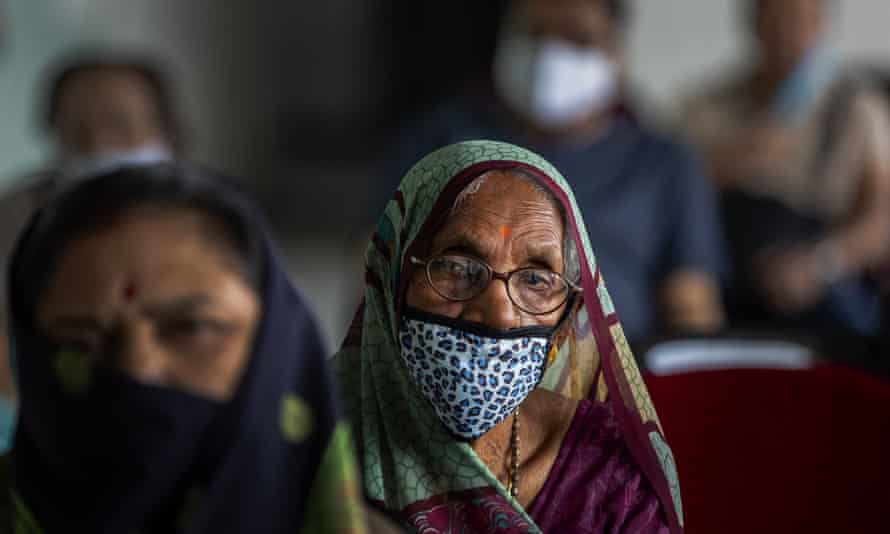The pandemic has hit India hard in the last several months. Though the state machinery and healthcare system are doing whatever they can with limited resources, common man is also striving to serve fellow beings in the time of this crisis. Individuals are either working alone or in association with like-minded people by forming service communities. A number of such communities have sprung up in the recent past. And they are selflessly and tirelessly engaged in providing essential services, medical facilities, healthcare services, counselling, and other kinds of support to the needy across the country, free of cost. Considering their ability to make a significant difference, it is important to understand the integral characteristics these service communities should possess to maximize this ability.
Well defined organizational structure
Any kind of an organized group of people engaged in activities for a specific purpose needs a well-defined structure. This becomes all the more crucial in service communities, where individuals are involved on a temporary basis, and their expected role may have very little to do with their professional background, experience, knowledge and skills. A structure not only gives immediate clarity about the scope of work but also directions to handle tasks outside the scope. It also helps in assessing and recognizing the efforts of individuals, hurdles they are facing, and areas where they may need support. The organizational structure of a service community should indicate the assigned role, relation with other roles, and flow of authority and responsibility. It should incorporate linear supervision and some degree of centralization.
If there is no clear and visible structure, individuals may need to deal with contradictory instructions from different sources leading to wastage of time and resources, apart from conflict. Multiple information channels may increase the possibility of incomplete or inaccurate communication. In case of doubts or queries, individuals may find it hard to get guidance from the right people. Lack of structure may also create an unequal distribution of tasks and responsibilities and poor accountability. Moreover, individual activities and effort may go completely unnoticed, causing poor utilization of specific strengths, and in due course, frustration.
Unified goals
Unified goals of the service community are critical for its effectiveness. However, during a pandemic, alignment between individual and organizational goals can become really challenging. Everyone has a lingering uncertainty and fear about the well-being of self, family, friends and colleagues. A person who may be a provider of service today may need the same service tomorrow. Also, the environmental conditions are continuously evolving. New facts, evidence and rules keep emerging, which redefine the direction and activities of the service community. Due to limitations associated with time, costs, manpower and resources, constant prioritization is required of what needs focus, and what can be postponed. Therefore, it is vital that all the participants have a shared understanding of the changing priorities and a sustained belief in the larger goals of the community.
If the overarching goals are not shared, it would be difficult to get buy-in from all stakeholders, thus slowing down decision making, or leading to sub-optimal decisions. This may also leave many stakeholders dissatisfied and disinterested. Besides, misaligned goals can lead to blocking or misrepresenting of information, and reduced transparency in operations. This can cause distrust, disruption in relationships, loss of conviction, misappropriation of scarce resources, misutilization of capacity, and eventually failure in achieving goals.
Clear communication
Community service during a crisis is an intense and high-pressure activity since there is perpetual urgency, few resources, and time constraints for individuals who are participating in the service along with their regular profession. Thus, clear communication between all individuals is vital for the operations to run smoothly, especially when there is an inter-dependence of tasks. Some aspects of communication are setting the right expectations for individuals, apprising them about their roles and responsibility and required time commitment, orienting them to internal processes and current challenges, taking systematic feedback from them, planning for additional support for them, and disseminating information to them to identify and resolve problem areas.
In the absence of these kinds of communication, individuals may experience confusion, misunderstanding and disagreement at every step, which is not conducive for a productive work environment. They may be uncertain about what is expected from them, how to prioritize tasks, what problems to anticipate and how to deal with them, and whom to approach in cases of non-resolution. Poor communication can also make it difficult for them to comprehend the strategy and actions of the service community, and hence develop faith in its overall purpose.
Conclusion
Service communities have tremendous potential to serve humanity and make a worthy contribution to society. This is because they are composed of individuals who wish to satisfy their own intrinsic drive for helping people in need. To achieve their potential, it is important for these communities to have a well-defined organizational structure, unified goals and clear communication. Though these attributes provide a strong foundation for performance in all kinds of organizations, they become all the more indispensable in service communities, where individuals work on a voluntary basis. Unfortunately, either these attributes are not appreciated, or cannot be institutionalized due to the lack of a dedicated management team. The absence of these attributes can make individuals helpless, demotivated and disengaged, and prevent them from performing to the best of their capabilities. It may lower both efficiency and effectiveness, and thus fail all attempts of a service community to positively impact the lives of people, despite best intentions.
 Prof. Smita Chaudhry is a faculty in the Department of Human Resources. She teaches in the undergraduate and postgraduate business management programmes. She takes courses in the areas of Leadership, Change Management, Strategic and Global HRM, HR Analytics, Team Management and Organizational Development. Smita is a doctorate in Organizational Behavior from the Indian Institute of Management Calcutta. Her thesis explores cognitive, emotional and behavioural responses to partner opportunism in client-vendor relationships. She has published papers in research journals and presented in various international conferences.
Prof. Smita Chaudhry is a faculty in the Department of Human Resources. She teaches in the undergraduate and postgraduate business management programmes. She takes courses in the areas of Leadership, Change Management, Strategic and Global HRM, HR Analytics, Team Management and Organizational Development. Smita is a doctorate in Organizational Behavior from the Indian Institute of Management Calcutta. Her thesis explores cognitive, emotional and behavioural responses to partner opportunism in client-vendor relationships. She has published papers in research journals and presented in various international conferences.
Views of the author are personal and do not necessarily represent the website’s views.

